New research led by Dr. James De Buizer at the SETI Institute and Dr. Wanggi Lim at IPAC at Caltech revealed surprising results about the rate at which high-mass stars form in the galactic center of the Milky Way.
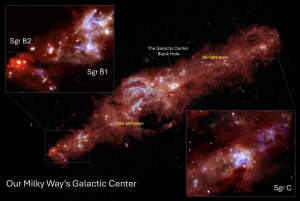
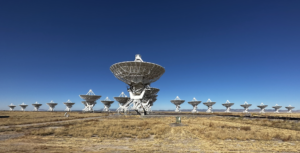
Mystery of Star Formation Revealed by Hearts of Molecular Clouds
An international team of astronomers has revealed mysterious star formation at the far edge of the galaxy M83. This research was presented today in a press conference at the 243rd meeting of the American Astronomical Society (AAS) in New Orleans, Louisiana. The research used several instruments operated by the National Science Foundation’s National Radio Astronomy Observatory (NRAO), including the Atacama Large Millimeter/submillimeter Array (ALMA), the Karl G. Jansky Very Large Array (VLA), and the Green Bank Telescope (GBT), along with the National Astronomical Observatory of Japan’s (NAOJ) Subaru Telescope and the NASA Galaxy Evolution Explorer (GALEX).
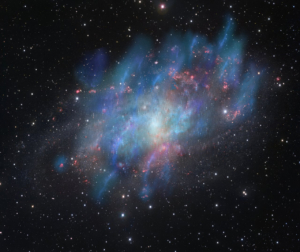
VLA Finds Cosmic Rays Driving Galaxy’s Winds
VLA observations revealed that cosmic rays can play an important role in driving winds that rob galaxies of the gas needed to form new stars. This mechanism may be an important factor in galactic evolution, particularly at earlier times in the history of the universe.
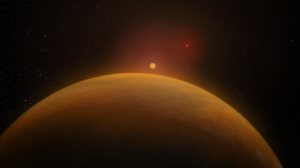
VLBA Produces First Full 3-D View of Binary Star-Planet System
Astronomers using the VLBA have produced the first-ever full, 3-D view of binary star system with a planet orbiting one of the stars. Their achievement promises important new insights into the process of planet formation.

New Study Reveals Previously Unseen Star Formation in Milky Way
A new survey of our home galaxy, the Milky Way, combines the capabilities of the Very Large Array and the Effelsberg telescope in Germany to provide astronomers with valuable new insights into how stars much more massive than the Sun are formed.
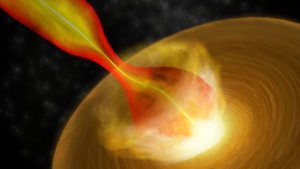
Jets from Massive Protostars Might be Very Different from Lower-Mass Systems, Astronomers Find
A highly-detailed VLA image indicates that the jets of material propelled outward by young stars much more massive than the Sun may be very different from those ejected by less-massive young stars.





